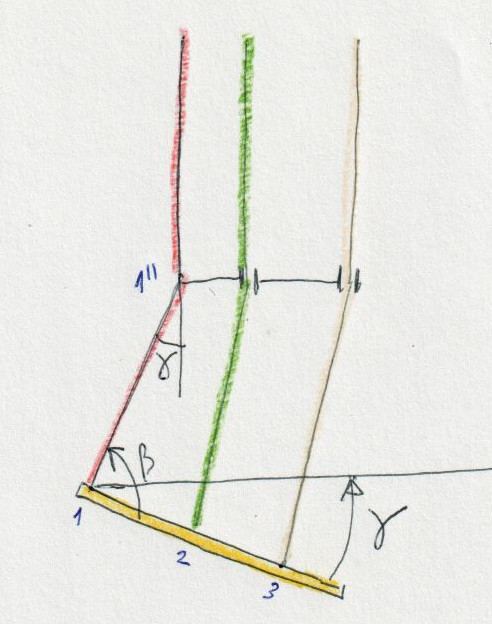
[en] [fr] [ru]
gnuComet
Putting fun back to the early 90's !


| Size |
M |
| Surface (m2) |
25 m2 |
| Flat span (m) |
10.33 |
| Flat AR |
4.27 |
| Cells |
28 |
| Closed cells |
4+0,5+0,5 |
| Weight range (Kg) |
60-80 |
| Glide ratio |
5.9+ |
| Anchors per rib |
4 |
| Risers |
3 or 4 |
| Extrados and intrados |
ripstop 40 gr/m2 |
| Ribs |
ripstop 40 gr/m2 hard |
| Lines (m) |
367 m |
| Normal risers |
Yes |
| Vario seat |
Yes |
| Certification |
No |







 |
Figure 3. The steering seat can
take other geometric forms in flight. We consider a model where the
strap 1-1 '' turns a gamma angle at point 1 '' with respect to the
vertical, and the seat plate is still perpendicular to the strap 1-1 ''. We see that this is approximately equivalent to rotate the seat plate an angle -Alpha in the previous model. That is, if we turn a gamma angle we get a lower speed, and if at the same time we apply an angle -Alpha, we accelerate. Combining Angles Gamma and Alpha we get different configurations. Generally, Gammma angle will be small, and we consider Alpha angle as more representative of the model. |

| A | 72 | cm | A riser |
| B | 82 | cm | B riser |
| C | 90 | cm | C riser |
| 1-1’’ | 32 | cm | |
| s2 | 4 | cm | |
| s3 | 11 | cm | |
| r2 | 5 | cm | |
| r3 | 9 | cm | |
| 1’’-3 | 33,8 | cm | |
| d | 34 | cm | Diagonal strap |

